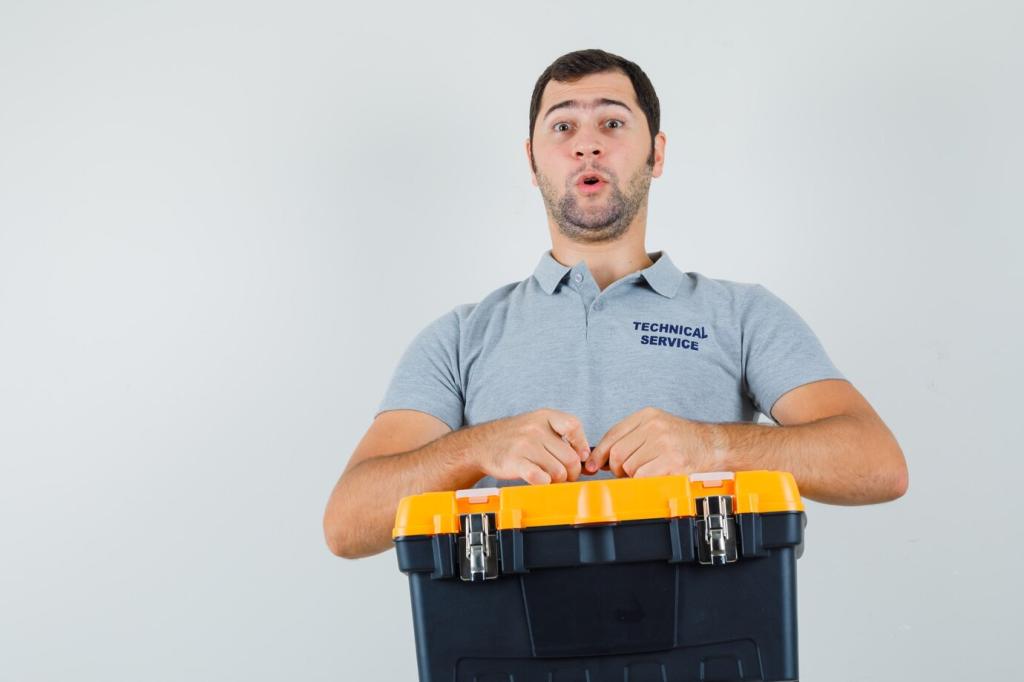
Ultimate Guide to Upholstery Cleaning
Today’s chosen theme: Ultimate Guide to Upholstery Cleaning. Welcome to a friendly, practical deep dive that helps you revive your favorite sofas, chairs, and ottomans with confidence, care, and science-backed techniques you can trust.
Decoding W, S, WS, and X
Check the tag: W means water-based cleaners are safe, S means solvent-only, WS allows both methods, and X requires vacuuming only. Always spot test in a hidden area and wait for full drying to confirm no color change, ring formation, or texture damage.
Natural vs Synthetic Fibers
Cotton, linen, and wool can swell, shrink, or develop water rings, while polyester, olefin, acrylic, and nylon often tolerate moisture better. Mixed blends behave unpredictably, so read tags and test carefully. Share your fabric type in the comments and we’ll suggest tailored routines.
Colorfastness and Pile Direction
Rub a white cloth lightly on a hidden spot; any dye transfer signals caution. For velvet or corduroy, clean in the direction of the nap to avoid shading. If you have a tricky pile, subscribe for our next detailed tutorial on handling directional fabrics beautifully.
Preparation: Set the Stage for Safe Cleaning
Vacuum Like a Pro
Use an upholstery attachment and crevice tool to lift grit that can scratch fibers during cleaning. Work top to bottom, hold fabric taut for better airflow, and use gentle strokes. Tell us which attachment you use most, and we’ll help fine-tune your technique.
Spot Test Protocol
Make a test solution, apply with a white cloth, and let it dry completely—ideally 24 hours. Watch for fading, rings, stiffness, or color bleed. Photograph your test patch and note timing; this simple habit prevents surprises and boosts your confidence when tackling the full piece.
Protect Surroundings and Yourself
Lay down drop cloths, open windows for airflow, and wear nitrile gloves. Unplug nearby electronics and move side tables to avoid drips. Keep kids and pets away until everything is dry. Comment with your setup and we’ll suggest improvements for tighter spaces.


The Stain Removal Playbook
Blot with cold water first, then a mild detergent solution on W or WS fabrics. Vinegar can help with tannins on many synthetics, but test carefully. Avoid heat, which can set stains. Share your worst spill story and we’ll walk you through a precise recovery plan.
The Stain Removal Playbook
Sprinkle cornstarch or baking soda to draw out oils, let sit, then vacuum thoroughly. For W fabrics, a tiny drop of dish soap in distilled water helps. For S fabrics, use a proper solvent and blot gently. Tell us what you tried, and we’ll troubleshoot lingering halos.

Deep Cleaning Methods That Work
Pre-vacuum, pre-spray lightly, allow short dwell time, agitate gently with a soft brush, then extract with minimal moisture. Make two dry passes for every wet pass. Use fans to speed drying and prevent rings. Tell us your machine model and we’ll optimize settings together.
Tools and Supplies That Make a Difference
Brushes, Cloths, and Attachments
Choose a soft horsehair brush for agitation, white microfiber cloths to prevent dye transfer, and an upholstery nozzle with a lint lifter edge. A crevice tool reveals hidden crumbs. Comment with your favorite tool and discover community-tested upgrades worth trying.
Safe Solutions You Can Mix
Combine one to two drops of mild dish soap per cup of distilled water to minimize mineral rings. For many synthetics, a tiny splash of vinegar can assist, but always test. Label bottles clearly and keep notes; organized habits deliver consistently clean results.
Drying and Deodorizing
Cross-ventilation, a box fan, and a dehumidifier speed safe drying and stop musty odors. A light baking soda sprinkle, left overnight and vacuumed, refreshes fabric. Share your climate and we’ll suggest a drying timeline to prevent wicking and reappearing stains.
Maintenance and Prevention for Everyday Life
Spend ten minutes vacuuming seams, rotating cushions, and lifting pet hair before it settles. Address small spots immediately with a tested solution. Tell us your schedule and we’ll help you fit a fast routine that actually sticks.
Maintenance and Prevention for Everyday Life
Modern, fluorine-free protectors can reduce absorption—test first, apply evenly, and allow full cure time. Shield fabrics from direct sun to prevent fading; consider window films or repositioning. Ask about your room layout and we’ll tailor protective strategies.


When DIY Isn’t Enough
Delicate fibers, hand-loomed textiles, or sentimental heirlooms deserve conservative handling. If tags are missing or the fabric reacts unpredictably, pause. Ask in the comments and we’ll help you prepare questions for a qualified upholstery cleaning specialist.
Prolonged moisture can harbor bacteria and odors, while smoke residues require targeted chemistry and controlled drying. A professional can assess internal padding and frame issues. Share the history of the damage—speed and accuracy matter for successful restoration.
Some manufacturers restrict certain cleaners or methods; verify recommendations before you begin. Rental machines vary widely in power and heat. Keep notes and photos of your process. If you are unsure, ask us and we’ll help you decide the safest next step.

A Story from the Sofa: The Salsa Save
A bowl of salsa toppled onto a beige sectional during movie night. We blotted the tomato oils with baking soda, vacuumed, then spot-treated with a mild detergent solution on this W fabric. Gentle agitation and careful drying later, the cushion looked brand new.
A Story from the Sofa: The Salsa Save
Acting fast stopped the stain from setting. Distilled water prevented mineral rings, and two dry extraction passes kept moisture low. Sunlight was avoided during drying to prevent outlines. Want our exact checklist? Subscribe and we’ll send the printable routine.


